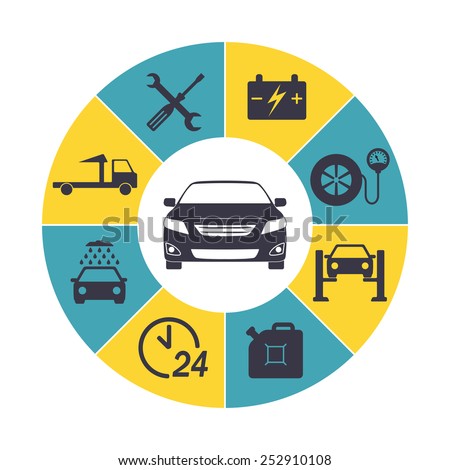Eager To Know What The Control Panel Warning Lights In Your Car Indicate? Explore Their Definitions For The Wellness And Safety And Security Of Your Vehicle
Eager To Know What The Control Panel Warning Lights In Your Car Indicate? Explore Their Definitions For The Wellness And Safety And Security Of Your Vehicle
Blog Article
Web Content Writer-Lim Torres
When you're behind the wheel, those radiant caution lights on your control panel can be a bit puzzling. Do you recognize what they're attempting to tell you concerning your auto's wellness? Comprehending the value of these lights is crucial for your security and the durability of your automobile. So, the next time among those lights turns up, would not you wish to analyze its message precisely and take the required actions to address it?
Common Warning Lights and Interpretations
Identify usual warning lights in your vehicle and understand their significances to make certain risk-free driving.
One of the most normal warning lights consist of the check engine light, which signals problems with the engine or discharges system. If this light comes on, it's important to have your lorry inspected quickly.
https://rafaelrnhcx.eedblog.com/30021981/exactly-how-to-outline-a-vehicle-in-under-an-hour-a-novice-s-quick-overview cautioning light shows reduced oil pressure, requiring prompt attention to stop engine damages.
A flashing battery light might recommend a faulty charging system, possibly leaving you stranded if not addressed.
https://brakes-and-rotors51628.eedblog.com/30021890/annual-auto-explaining-overview-preparing-your-car-for-seasonal-changes (TPMS) light alerts you to reduced tire pressure, impacting car security and gas efficiency. Ignoring this could bring about dangerous driving conditions.
The abdominal light suggests a trouble with the anti-lock stopping system, endangering your ability to quit swiftly in emergencies.
Finally, the coolant temperature level alerting light warns of engine getting too hot, which can result in extreme damages if not solved swiftly.
Comprehending these typical caution lights will aid you deal with issues quickly and keep safe driving problems.
Value of Prompt Attention
Comprehending the typical caution lights in your cars and truck is just the primary step; the value of promptly dealing with these warnings can't be emphasized sufficient to ensure your safety when traveling.
When a caution light illuminates on your control panel, it's your automobile's way of interacting a possible issue that needs focus. Ignoring these warnings can cause more extreme problems in the future, jeopardizing your safety and security and potentially costing you much more out of commission.
Prompt interest to advising lights can avoid breakdowns and crashes. As an example, a flashing check engine light might indicate a misfire that, if left unattended, could cause damages to the catalytic converter. Addressing benzdetailing. without delay can save you from an expensive repair service.
In a similar way, a brake system cautioning light could indicate low brake fluid or used brake pads, essential parts for your security when driving.
Do It Yourself Troubleshooting Tips
If you see a warning light on your control panel, there are a few DIY troubleshooting pointers you can attempt before seeking expert help.
The first step is to consult your vehicle's handbook to comprehend what the particular caution light suggests. Sometimes the concern can be as straightforward as a loose gas cap setting off the check engine light. Tightening the gas cap might resolve the trouble.
Another typical issue is a low battery, which can set off various alerting lights. Examining the battery connections for rust and ensuring they're safe might deal with the issue.
If a warning light continues, you can try resetting it by disconnecting the auto's battery for a few minutes and afterwards reconnecting it. Furthermore, checking your automobile's liquid levels, such as oil, coolant, and brake fluid, can help repair alerting lights associated with these systems.
Conclusion
To conclude, recognizing your auto's caution lights is necessary for maintaining your car running efficiently and securely. By immediately addressing these informs and recognizing what they indicate, you can stay clear of costly fixings and prospective failures.
Bear in mind to consult your cars and truck's manual for specific details on each cautioning light and do something about it accordingly to guarantee a hassle-free driving experience.
Remain educated, stay risk-free on the road!
